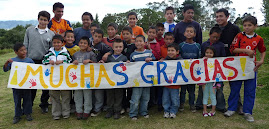In early September, we were asked to make three, big (60 cm x 93 cm) shelves for the ministry office. Knowing that I would be away travelling for the first half of October, I responded that we could - but not until the end of October.
A couple of the older boys helped rip up two blocks of fir (called
pino cipress here) into 4 cm thick slabs during September so that it could dry by the time I returned from my trip. Unfortunately, I don't have any pictures of this process.
After my return, we planed the slabs down to 3 cm thickness and trimmed them up to make them into finished lumber. After that, we formed the tongue and groove pattern on the edges using multiple passes with a rabbit bit and then a slot cutter on our provisional router table.
 |
| The shop-made tongue and groove pine lumber. |
 |
| Our provisional router table, which consists of a piece of 1/2" particle board clamped to an set of table legs from an old table saw, supporting a 2.2 Hp Milwaukee router. It works, but leaves a lot to be desired, so in December I began making a REAL router table - which you can read about in a later post... |
We then glued up the shelves and after they dried, the boys began sanding them flat.
 |
| The shelves now glued and clamped together. |
We then trimmed the shelves to finished size and beveled the upper surface of the front side of each shelf using the hand-held router. Sorry, no pictures of this step....
 |
| Andres Castro using the belt sander while Arley Rocha observes. |
 |
| Camilo Castro trying his hand with the Dewalt belt sander, which can be a challenge to control, especially on the far side of the shelf. |
 |
| Arley Rocha taking his turn sanding. |
The boys spent a good bit of two afternoons sanding, it was surprising how long it took to sand both sides of the three shelves, going down t through the various grit sizes to 120 grit with the belt sander and then to 320 grit with an orbital sander.
 |
| Preparing to hang the shelves for painting |
Finally, it was time to begin applying finish. We applied three coats of sanding sealer and then two coats of tinted lacquer to make a nice, smooth finish. Of course, we sanded the surfaces again lightly between coats.
 |
| William Gomez applying sanding sealer to the shelves. |
 |
| The shelves before the tinted lacquer was applied. |
We completed the shelves on November 3rd, a few days later than promised, but they turned out very nice.
 |
| The completed shelves as installed at the IMC office |
Nancy Centeno, the IMC Director in Colombia, liked the shelves so much that she has asked us to make three more for her office...








































